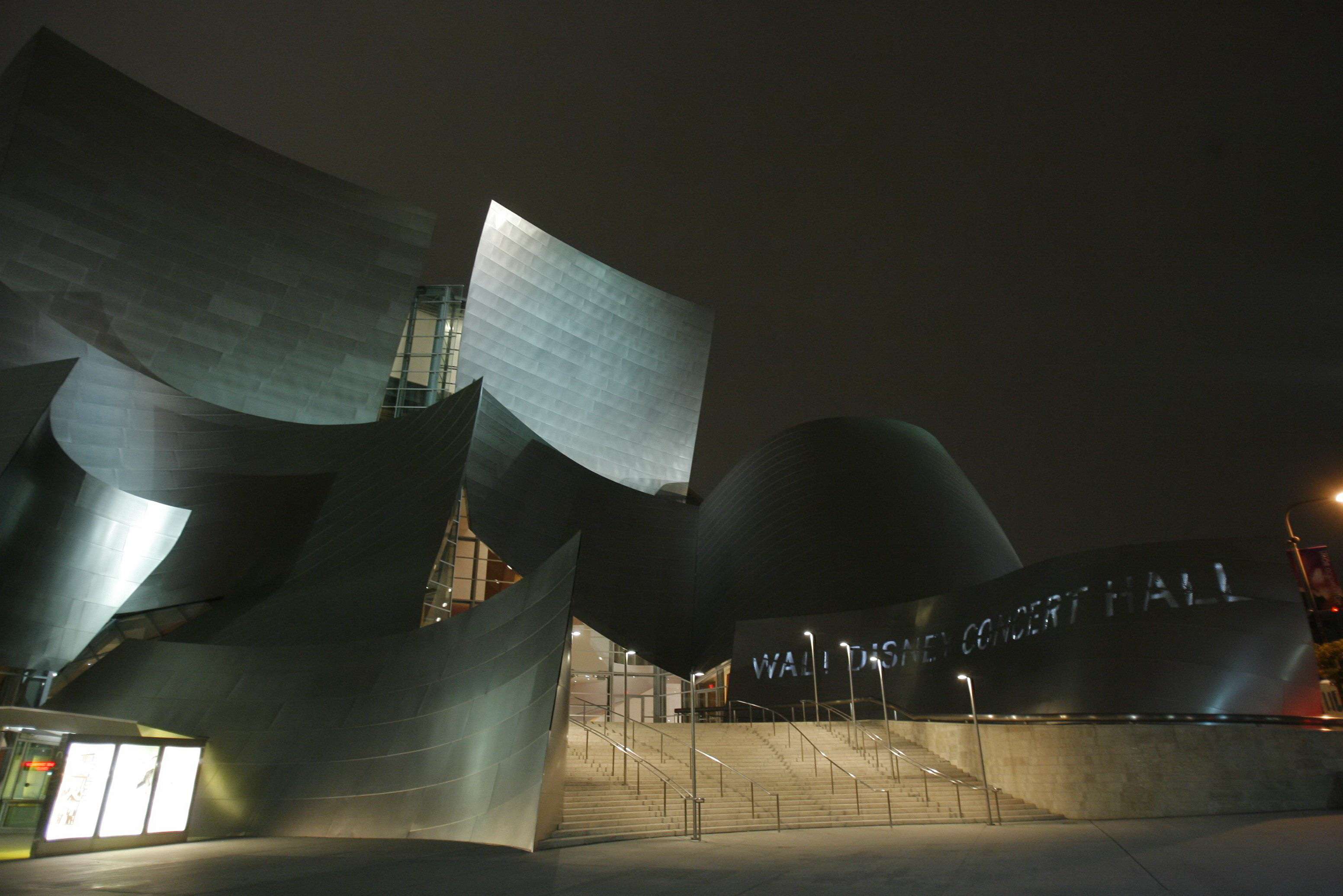|
Back
Rattle Returns to Los Angeles Los Angeles
Walt Disney Concert Hall
05/03/2012 - & May 4*, 5, 6, 2012
György Ligeti: Atmosphères
Richard Wagner: Prelude to Act I of Lohengrin
Gustav Mahler: Rückert-Lieder
Anton Bruckner: Symphony No. 9 in D minor
Magdalena Kozená (mezzo-soprano)
Los Angeles Philharmonic Orchestra, Simon Rattle (conductor)

The Walt Disney Hall (© Mathew Imaging)
While not quite a local boy, Sir Simon Rattle has certainly made good since his early days in Los Angeles. The former Principal Guest Conductor of the LA Phil returned with his wife, mezzo-soprano Magdalena Kozená, to Southern California for four concerts with his old band. Much has changed since those days. Both the Phil and Rattle have gone their separate yet highly successful ways, achieving notoriety at the zenith of the classical music world. The reunion of these two artistic forces of nature was in no way disappointing, and in fact, was as thrilling as one could have hoped for. I have no idea how many rehearsals the Phil had with Rattle, but it is hard to imagine another week, or even a month’s worth, would have impacted this performance even more. Not only were conductor and orchestra in fine sync, Rattle was able to draw a distinct, thunderous sound from this orchestra. A listener would be forgiven if he or she momentarily mistook the LA Phil for Rattle’s home group, the Berlin Philharmonic.
Rattle and the Berliners have been on a bit of a role lately with this repertoire. They have a new recording of a four movement version of the Bruckner, and with Kozená, a new recording of the Mahler songs. While Rattle’s mastery of this repertoire was not surprising, the LA Phil’s performance was just that. Maybe it was the tessitura of the scores, which favored the lower ranges of the strings, but their sound was corporally rich, with a focused core. Grounded in the thunderous double basses, the rest of the strings (violins sections sat divided), layered a lavish, organ-like sound on top that never approached harshness. This did wonders for the three movements of the Bruckner. In the friendly space of Disney Hall, the sound was never fatiguing to the listener. Under the guidance of Rattle, Bruckner’s final symphony was not only exciting and dramatic, it was lucid. Pauses, particularly in the third and final movement, were long and emphasized before returning to the first theme. Perhaps one of Rattle’s greatest strengths is knowing when to back off. At one point, in the ferociously building “Scherzo,” the conductor clasped his hands, as if in prayer, for several bars. Rattle allowed the climaxes to build, but was careful about giving too much too soon. The summits of each movement were clear and previously unsurpassed in volume and ferocity, with the red-faced Rattle forging the way. The maestro paced the score brilliantly and convincingly. It was one of the best arguments for this piece that I had ever heard.
The first half of the evening began with avant-garde composer Györgi Ligeti’s orchestral masterpiece Atmosphères, followed, without pause, by Wagner’s prelude to the first act of Lohengrin. It was a brilliant pairing of pieces. The orchestra clearly enjoyed navigating through the wash of sonorities in the Ligeti, and Disney Hall’s generous acoustics gave the sounds a warm blossom. Rattle conducted a few bars of silence before the divided violins began Wagner’s enchanting prelude. The conductor’s understated reading of the piece did not linger, but still provided plenty of power and majesty. As in the Ligeti, it is music that arrives and then leaves.
Before the intermission, a radiant Magdalena Kozená performed Mahler’s intimate Rückert-Lieder with a reduced orchestra. The slender, statuesque Czech sang with a surprisingly resonant sound that, while slightly mannered in technique, was highly affecting and direct. Although more weight would have been preferred towards the bottom of her range, the middle and highest extensions had a beautiful sheen and were always in tune. She is a magnetic artist who is best heard in person. The readings were brisk and flowing, with a sympathetic accompaniment by the smaller orchestra. The ensemble of the forces was remarkable, with the solo woodwinds providing a fine accompaniment to Kozená. Ariana Ghez’s oboe work was particularly outstanding. Kozená’s “Um Mitternacht” was captivating and sung with a moving vulnerability. The closing bars of “Ich bin der Welt abhanden gekommen,” longingly recalling the melody of the first song, “Liebst du um Schönheit,” closed the first half. At that point, it was hard to imagine the Bruckner bettering what had come before, but this was no doubt the case. Rattle’s leadership, combined with the LA Phil’s powerful sound, made for a most illuminating and satisfying evening of music. Rattle brought out the best in this already fine orchestra. It was a pairing worthy of every superlative available.
Matthew Richard Martinez
|